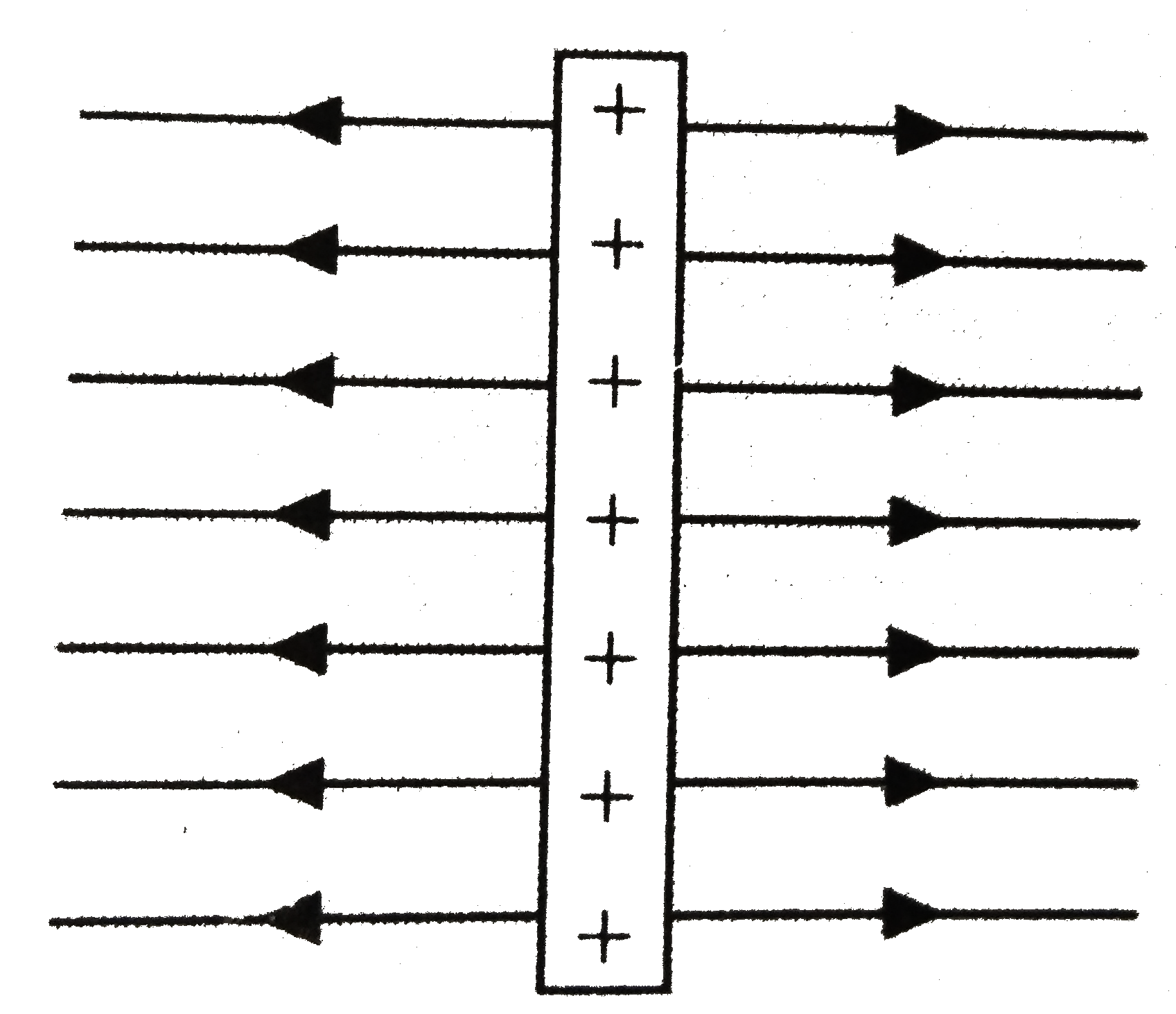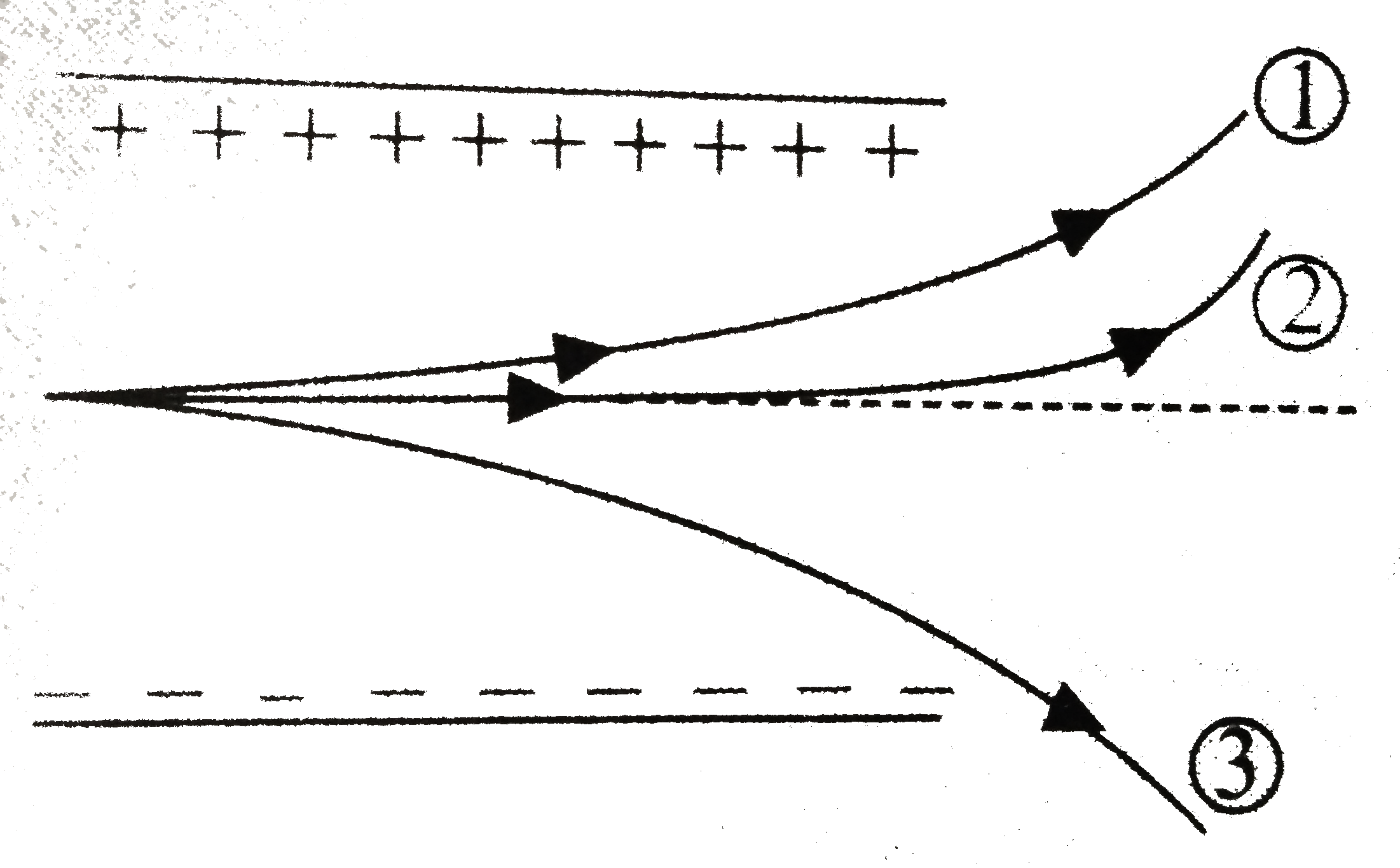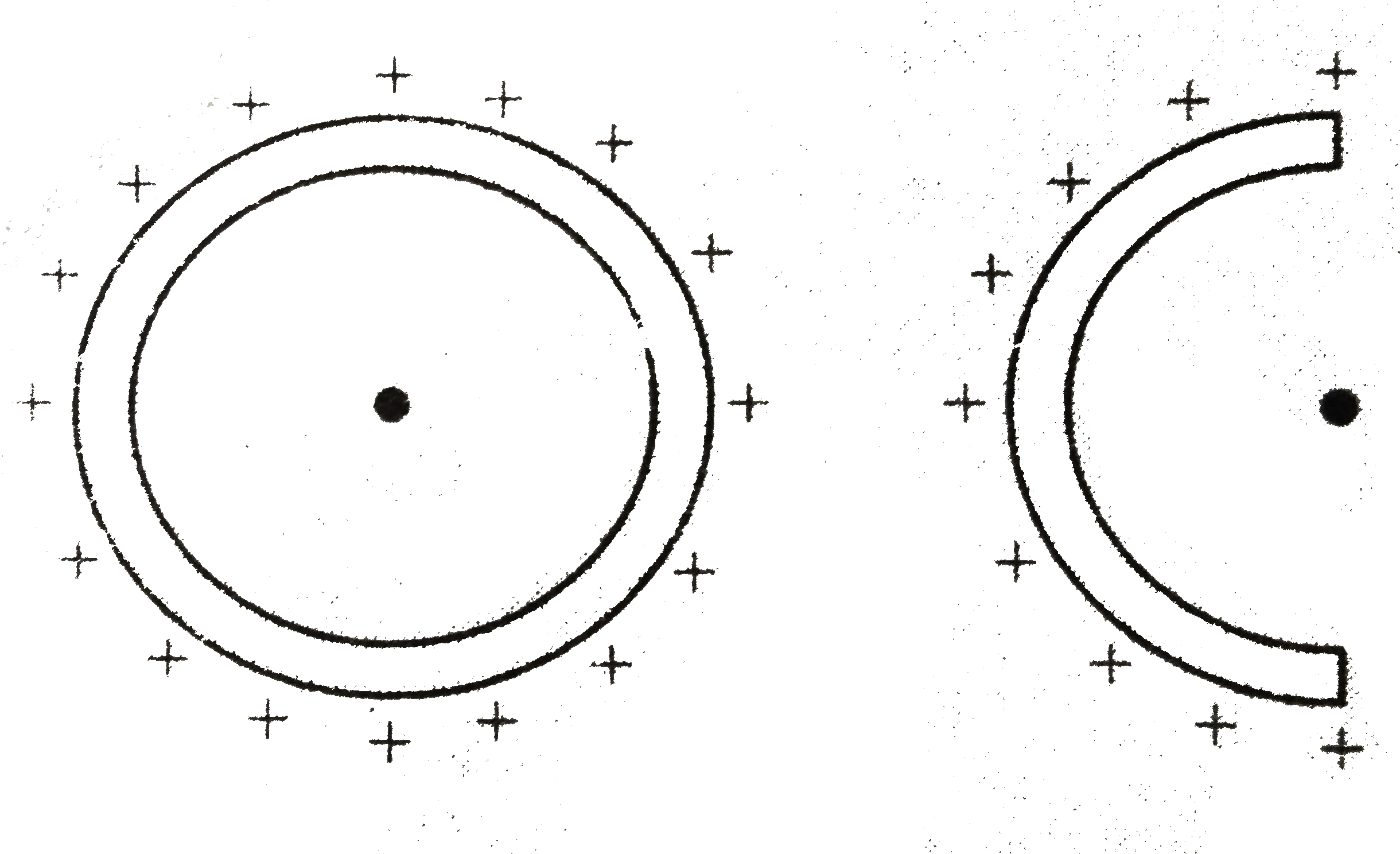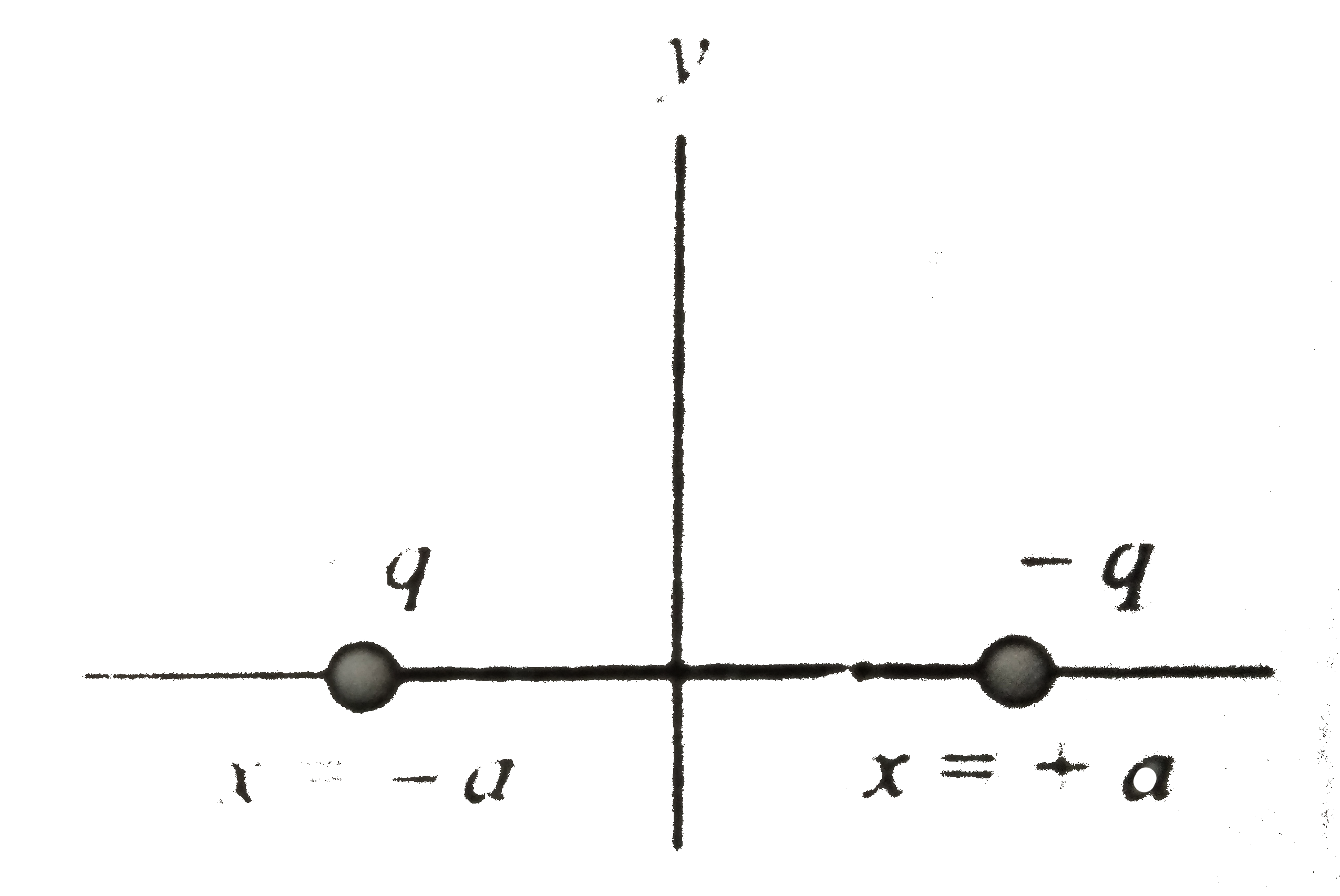Exercises from CENGAGE PHYSICS (ENGLISH) Chapter 5 COULOMB LAW AND ELECTRIC FIELD for Class 12
| Class 12 | PHYSICS |
| Chapter | COULOMB LAW AND ELECTRIC FIELD |
| CENGAGE PHYSICS (ENGLISH) | Exercises |
| Medium | English |
| Academic Year | 2023-2024 |
Question 3
(a) Can two bodies having like charge attract each other (yes/No)
(b) Can a charged body attract an unchanged body? (yes/No)
(c ) Two identical metallic spheres of exactly equal masses are taken, one is given a positive charge q and the other an equal negative charge. Their masses after charging are different. Co,,ent on the statement. View SolutionQuestion 12
Two identical conduction spheres, one having an initial charge +Q and the other initially uncharged, are brought into contact.
(a) What is the new charge on each sphere?
(b) While the spheres are in contact, a positively chaged rod is moved close to one sphere, causing a redistribution of hte charges on the two spheres so the charge on hte sphere closest to the rod has a charge-Q. What is the charge to the other sphere?View SolutionQuestion 13
Two identical conducting spheres are charged by induction and then separated by a large distance, sphere 1 has charge +Q and sphere 2 has charge -Q. A third sphere is initially uncharged. If sphere 3 is touched to sphere 1 and separated and then touched to sphere 2 and separated what is the final charge on each of the three spheres?View SolutionQuestion 16
Figure shows three arrangements of an electrons e and two protons p(where Dgtd)
(a) Rank the arrangement according to the magnitude of the net electrostatic force on the electron due to the protons placing the largest first.

(b) In situation (c), is the angle between the net force on the electrons and the line labeled horiontal less than or more than 45∘?View SolutionQuestion 17
Figure shows two charge particles on an axis. The charges are free to move. At one point, however, a third charged particle can be placed such that all three particles are in equilibrium.
(a) Is that point to the left of the first two particles to their rightm or between them?
(b) should the third paricle be positively or negatively charged?
(c ) Is the equilibrium stable or unstable?
 View Solution
View SolutionQuestion 20
Two small balls having equal positive charge Q (coulumb) on each suspended by two insulating strings of equal length L (metre) from a hook fixed to a stand. The whole set-up is taken in a satellite into space where there is no gravity (state of weightlessness). Then tension (newtons) in each string is:View SolutionQuestion 21
Suppose we have a large number of identical particles, very small in size. Any two of them at 10cm separation repel with a force of 3×10−10N.
(a) If one of them is at 10 cm from a group (of very small size) of n others, how strongly do you expect it to be repelled?
(b) Suppose you measure the repulsion and find it 6×10−6N. How many particles were there in the group? View SolutionQuestion 24
Two insulated identically sized charged copper spheres A and B have their centers separated by a distance of 50 cm. A third sphere of the same size but uncharged is brought in contact with the first, then in contact with the second and finally removed from both. What is the new force of repulsion between A and B? View SolutionQuestion 25
Two small balls having equal positive charge Q (coulumb) on each suspended by two insulating strings of equal length L (metre) from a hook fixed to a stand. The whole set-up is taken in a satellite into space where there is no gravity (state of weightlessness). Then tension (newtons) in each string is:View SolutionQuestion 29
A particle with positive charge Q is held fixed at the origen. A second particle with positive charge q is fired at the first paricle, which follows the trajectory as shown in fig.

(a) Is the angular momentum of the second particular momentum of the second particle constant about some axis? Why or why not? Give reason to support your answer.
(b) Does the Coulomb force that one charge exerts on other charges changes if the other charges are brought nearby?(yes/No)View SolutionQuestion 30
Fig. shows some of the electric field lines due to three point charges arranged along the vertical axis. All three charges have the same magnitude.
(a) What are the signs of each of the three charges? Explain your reasoning.
(b) At what points(s) is the magnitude of the electric field the smallest? Explain your reasoning. Explain how the fields produced by each individual point charge combine to give a small net field at this point or points.
(c ) Two point charges q and -q are placed at a distance d apart. What are the points at which the resultant electric field is parallel to the line joining the two charge?
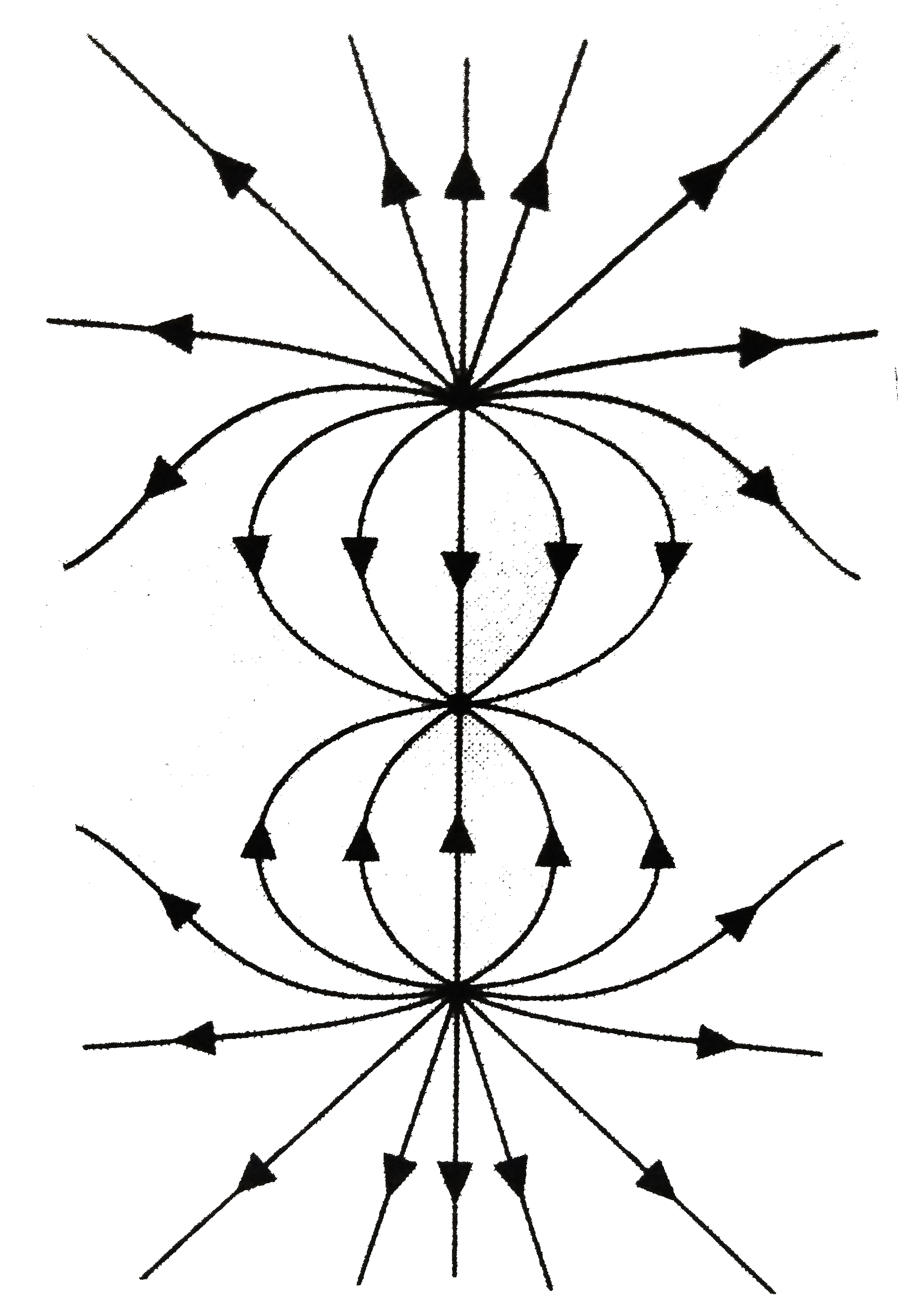 .View Solution
.View SolutionQuestion 34
In fig, two particles, each of charge -q are arranged symmetrically about the y-axis, each producing an electric field at point P on the y-axis.
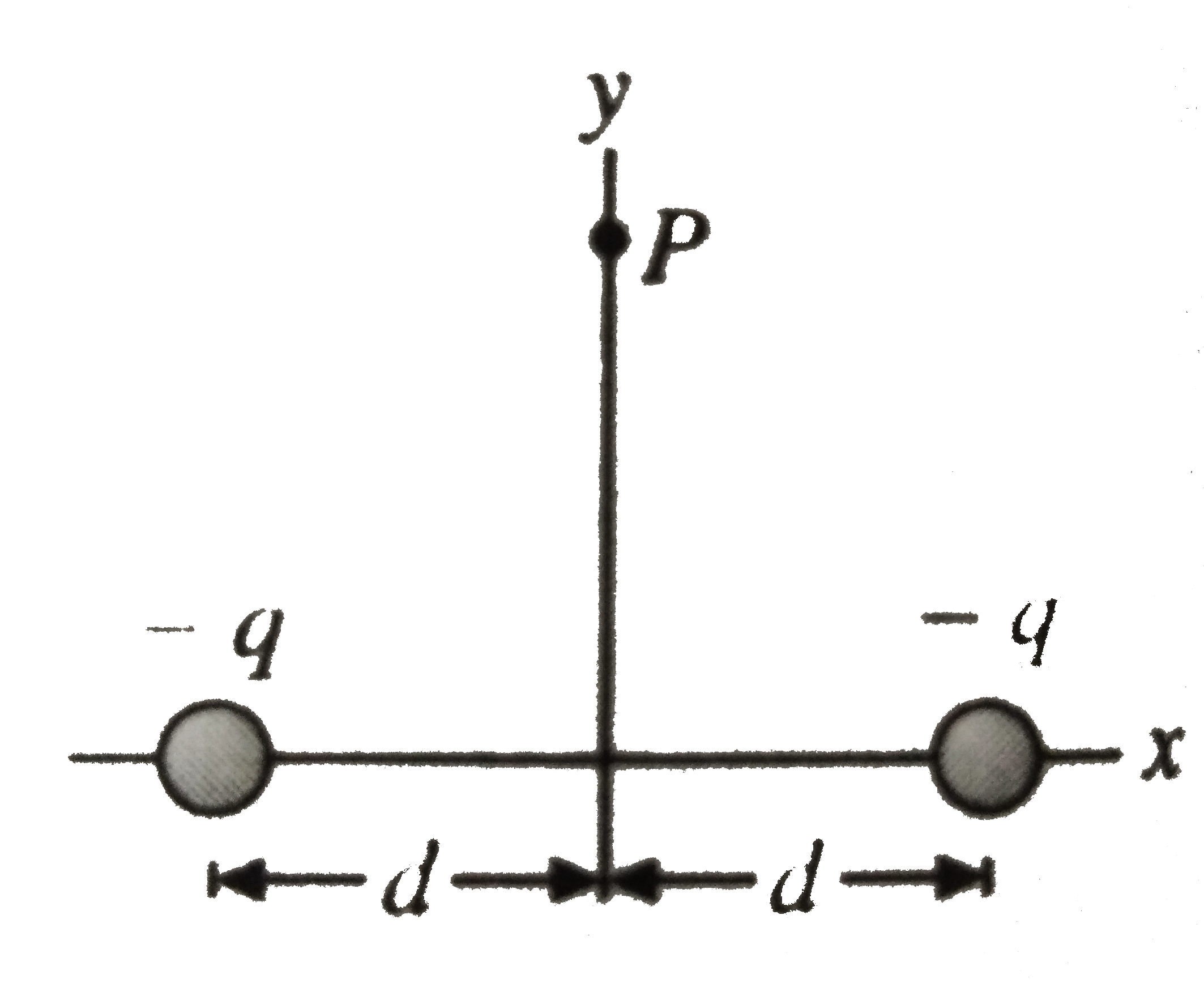 .
.
(a) Are the magnitudes of the fields at P equal?
(b) Is each electric field directed towards or away form the charge producing it ?
(c ) Is the magnitude of the net electric field at P equal to the sum of the magnitudes E of the two field vectors (is it equal to 2E)?
(d) Do the x-components of those two field vectors add or cancel?
(e ) Do their y-components add or cancel?
(f) Is the diretion of the net field at P that of the canceling components or the adding components?
(g) What is the direction of the net field? View SolutionQuestion 35
In fig. a plastic rod in the form of circular are with charge +Q unformly distributed on it produces an electric fieldof magnitude E at the centre of curvature (at the origin). In fig., more circular rods with identical umform charges +Q are addes until the circle is complete. A fifth arrangement (which would be labeled e) is like taht in d except that the roed in the fourth quadrant has charge-Q. Rank all the five arrangements according to the magnitudes of the electric field at the center of curvature, greatest first.
 View Solution
View SolutionQuestion 38
Three small spheres x,y, and z carry charges of equal magnitudes and with signs shown in fig. They are palced at the vertices of an isosceles triangle with the distance betwwen x and y equal to the distance between x and z. sphere y and z are held in place, but sphere x is free to move on a frictionless surface.
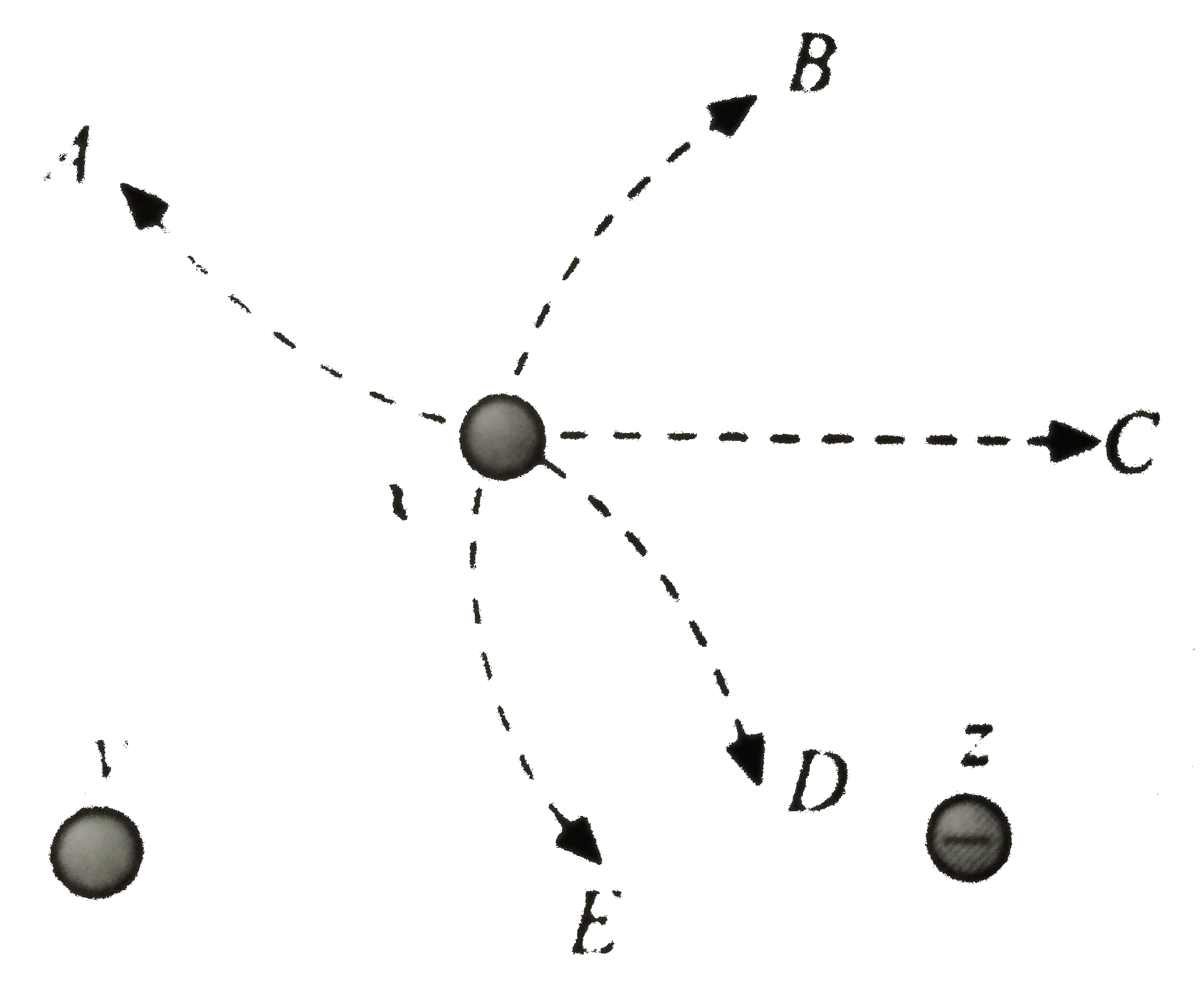
(a) what is the direction of the electric force on sphere x at the point shown in the figure?
(b) Which path is sphere x likely to take when released? View SolutionQuestion 39
Two identical positive charges are fixed on the y-axis, at equal distances from the origin O. A particle with a negative charges starts on the x-axis at a large distance from O. moves along the x-axis passes through O, and moves far away from O on the other side. Its acceleration a is taken as positive along its direction of motion. Plot acceleration a of the particle against its x-coordinate. View SolutionQuestion 40
An electric field is defined in terms of q0 a small positive charge. If the definition was in terms of a small negative charge of the same magnitude, then compared to the original field the newly defined electric field.
(a) would point in the same direction and have the same magnitude.
(b) would point in the opposite direction and have the same magnitude.
(c ) would point in the same direction and have the different magnitude.
(d) would point in the opposite direction and have the different magnitude. View SolutionQuestion 43
An electron (mass me)falls through a distance d in a uniform electric field of magnitude E.
 ,
,
The direction of the field is reversed keeping its magnitudes unchanged, and a proton(mass mp) falls through the same distance. If the times taken by the electrons and the protons to fall the distance d is telectron and tproton respectively, then the ratio telectron/tproton.View SolutionQuestion 44
Two charged metal plates in vacuum are 10cm apart. A uniform electric field of intensity (45/16)×103NC−1 is applied between the plates. An electron is released between the plates from rest at a point just outside the negative plate.
(a) Calculate how long (t) will the electron take to reach the other plate?
(b) At what velocity (v) will it be electron take to hits teh other plate? View SolutionQuestion 45
Two idential point charges Q are kept at a distance r from each other. A third point charge is placed on the line joing the above two charges such that all the three charges are in equilibrium. The third charge
(a) should be of magnitude q=………..
(b) should be of sign .......
(c ) should be placed ........ . View SolutionQuestion 51
Two point-like charge a and b whose strengths are equal in absolute value are positioned at a certain distance from each other. Assumeing the field strenght is positive in he direction of the r axis. Determine the sign of the charge for each distribution of the field strenght between charge for each distribution of the field strenght between charges src="https://d10lpgp6xz60nq.cloudfront.net/physics_images/BMS_V03_C01_E01_055_Q01.png" width="80%">View SolutionQuestion 52
An electron moving in a gravitational free space enters a unifrom electric field E with an initial velocity shown in fig.
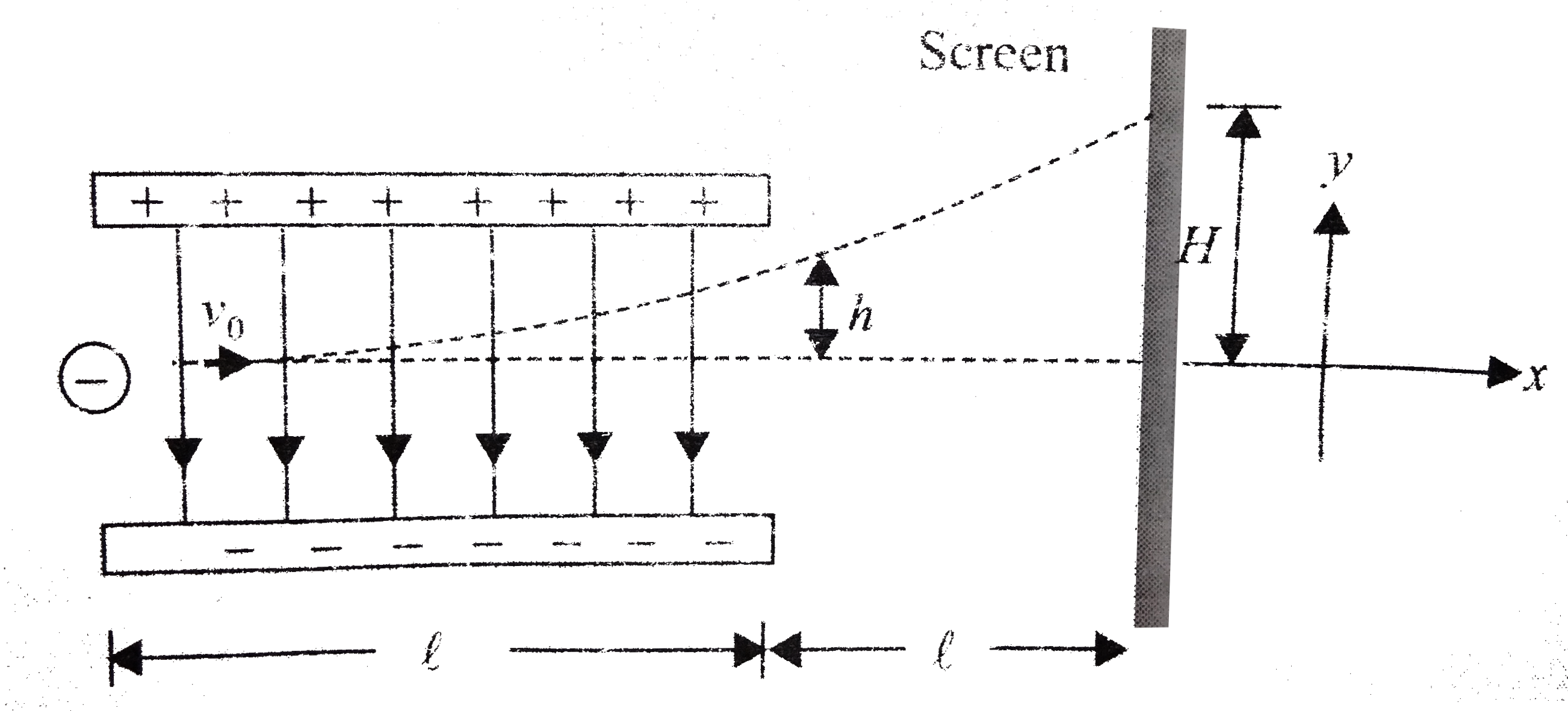 .
.
(a) Find the deflection distance h in the field .
(b) Find an expression for the velocity of electron when it just emerage from the field.
(c ) Find an expression for the total deflection distance H at a vertical screen placed at a distance l from the region of uniform field .(Assume that the field abruptly ends outside the field. ). View SolutionQuestion 53
Protons are projected with an initial speed vi=6kms−1 from a fileds-free region →E=−900ˆjNC−1 present above the plane as shown in fig. The initial velocity vector of the protons makes an angle u with the plane. The proton are to hit a target that lies at a horizontal cross the plane and enter the electric field. Find the angle θ at which the protons must pass through the plane to strike the target.
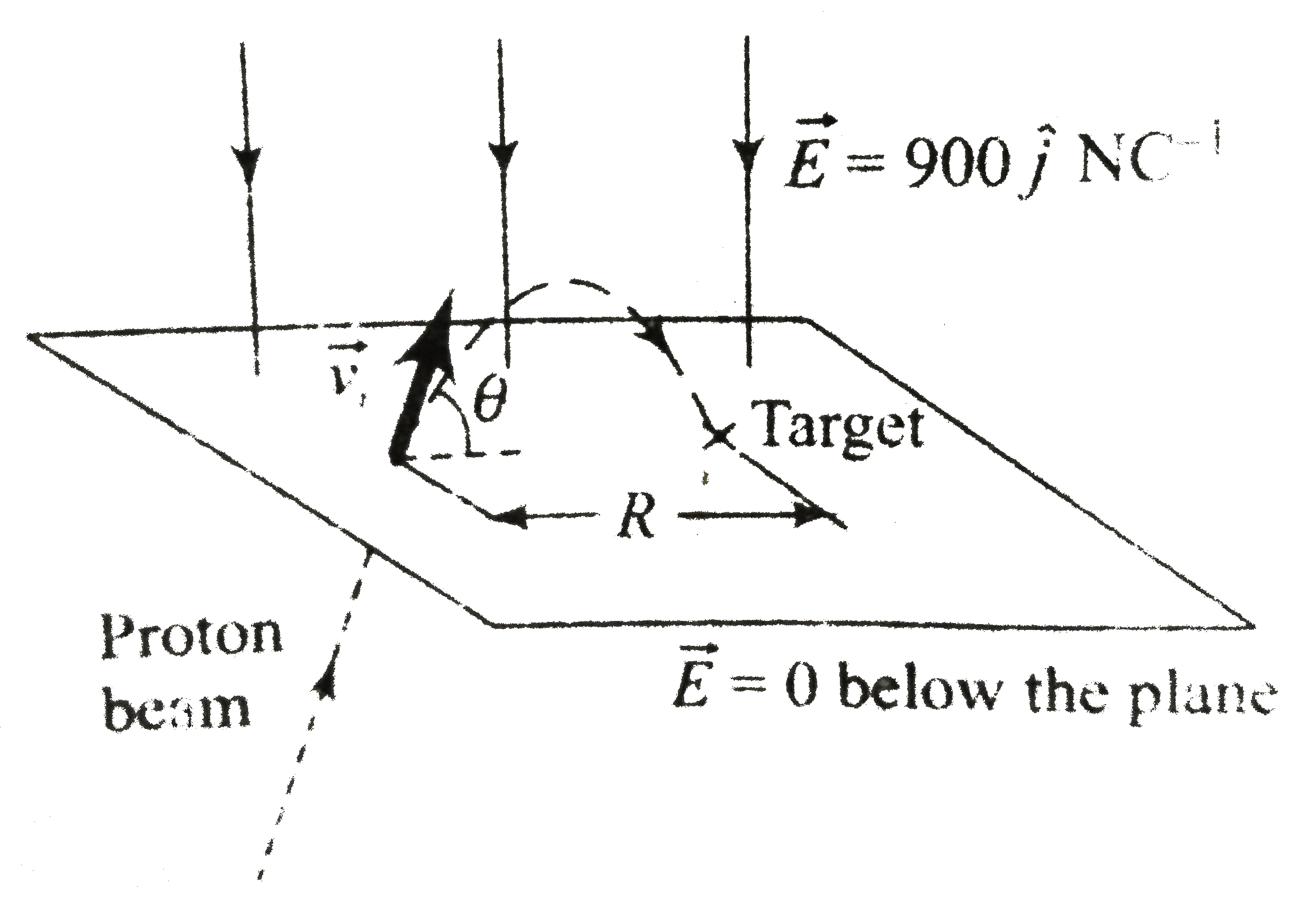 View Solution
View SolutionQuestion 54
Two indentical point charges having magnitude q each are placed as shown if fig. If we place a negative cahrge (of magnitude -q and mass m)at the midpoint of charges and displaced along the x-axis, examine whether it will perform simpe harmonic motion. If yes then find the time period of oscillation of the particle.
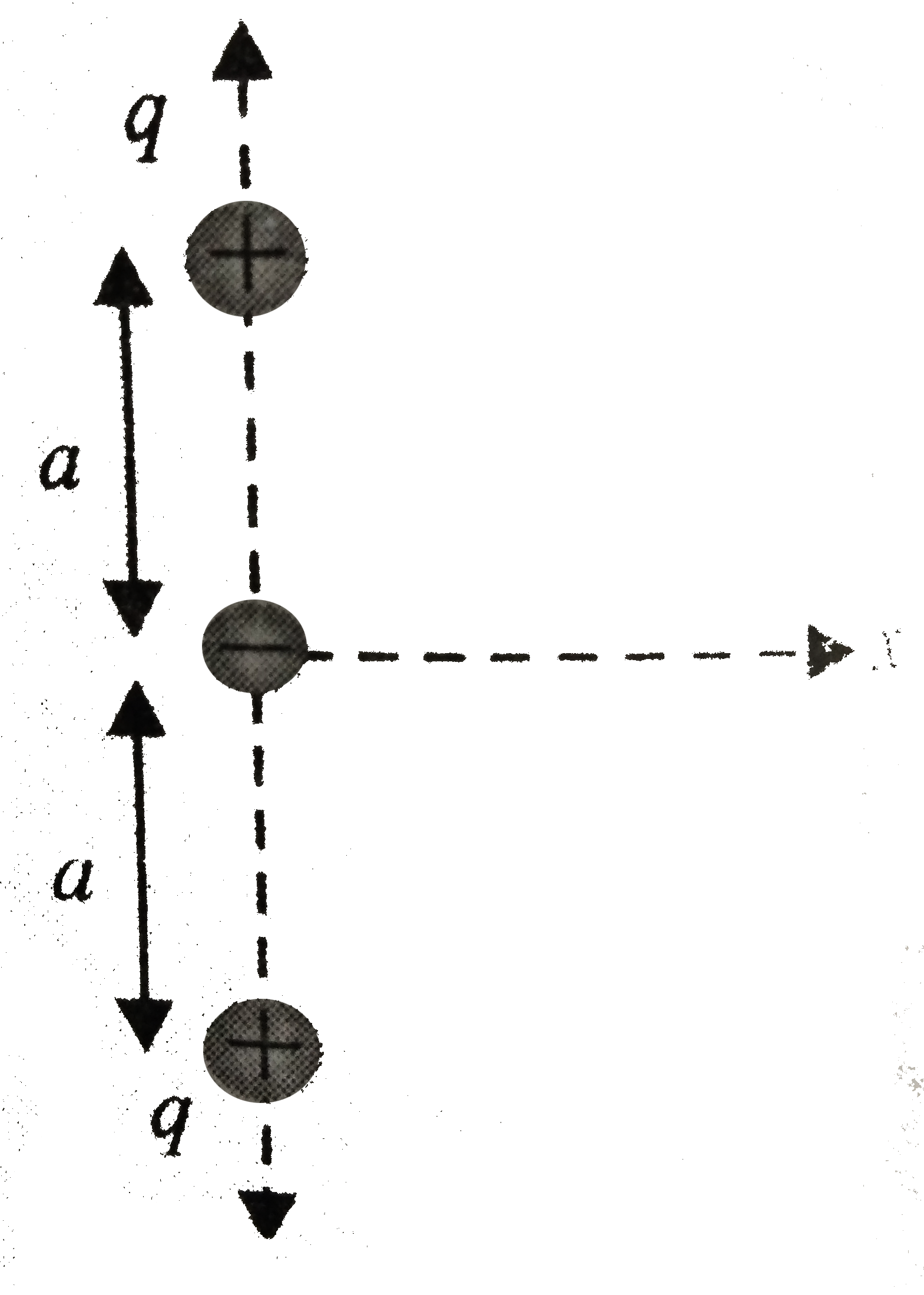 View Solution
View Solution

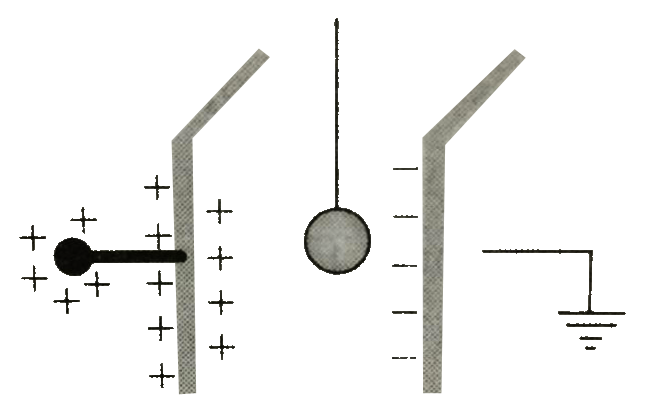

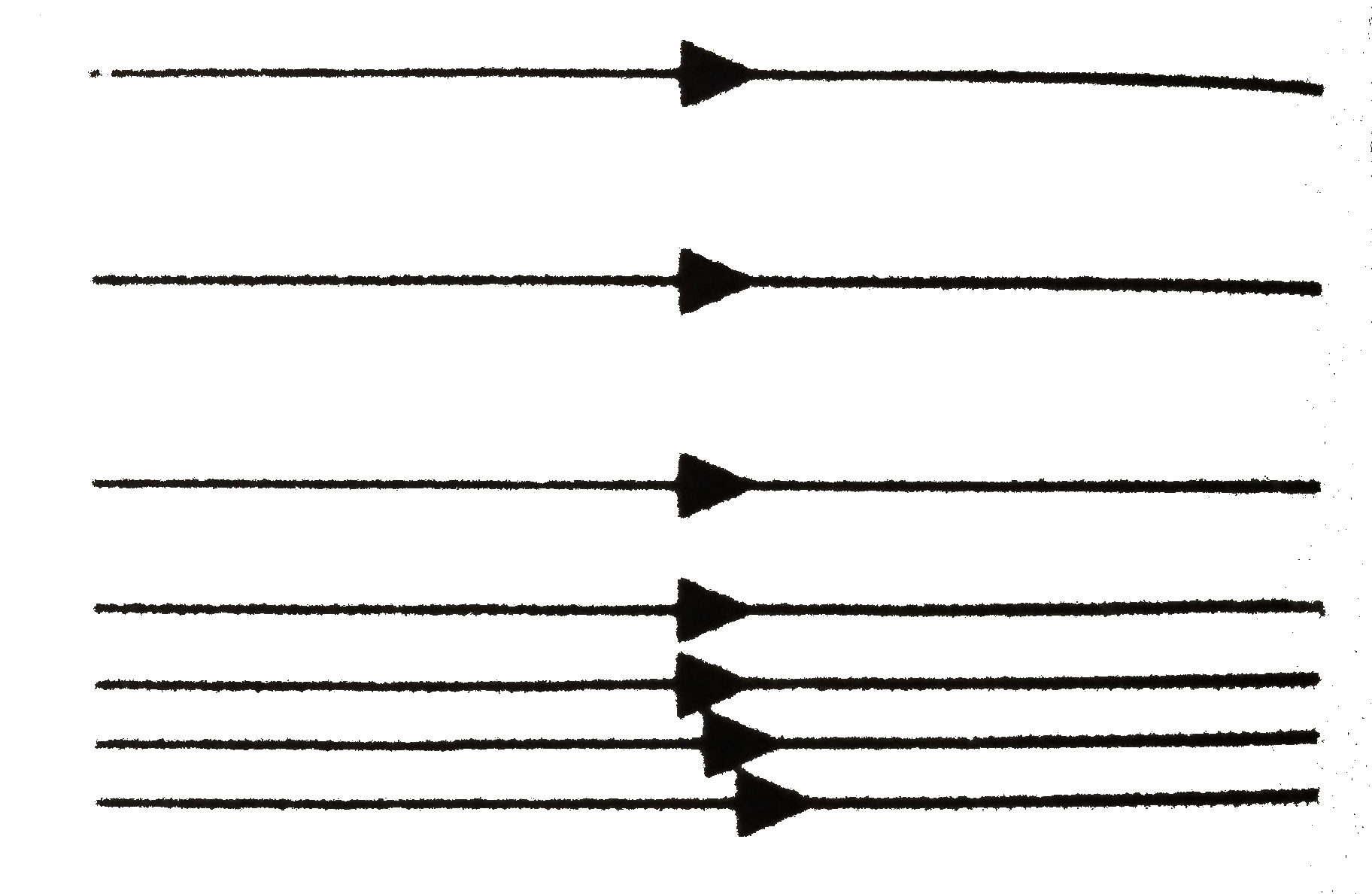 .
.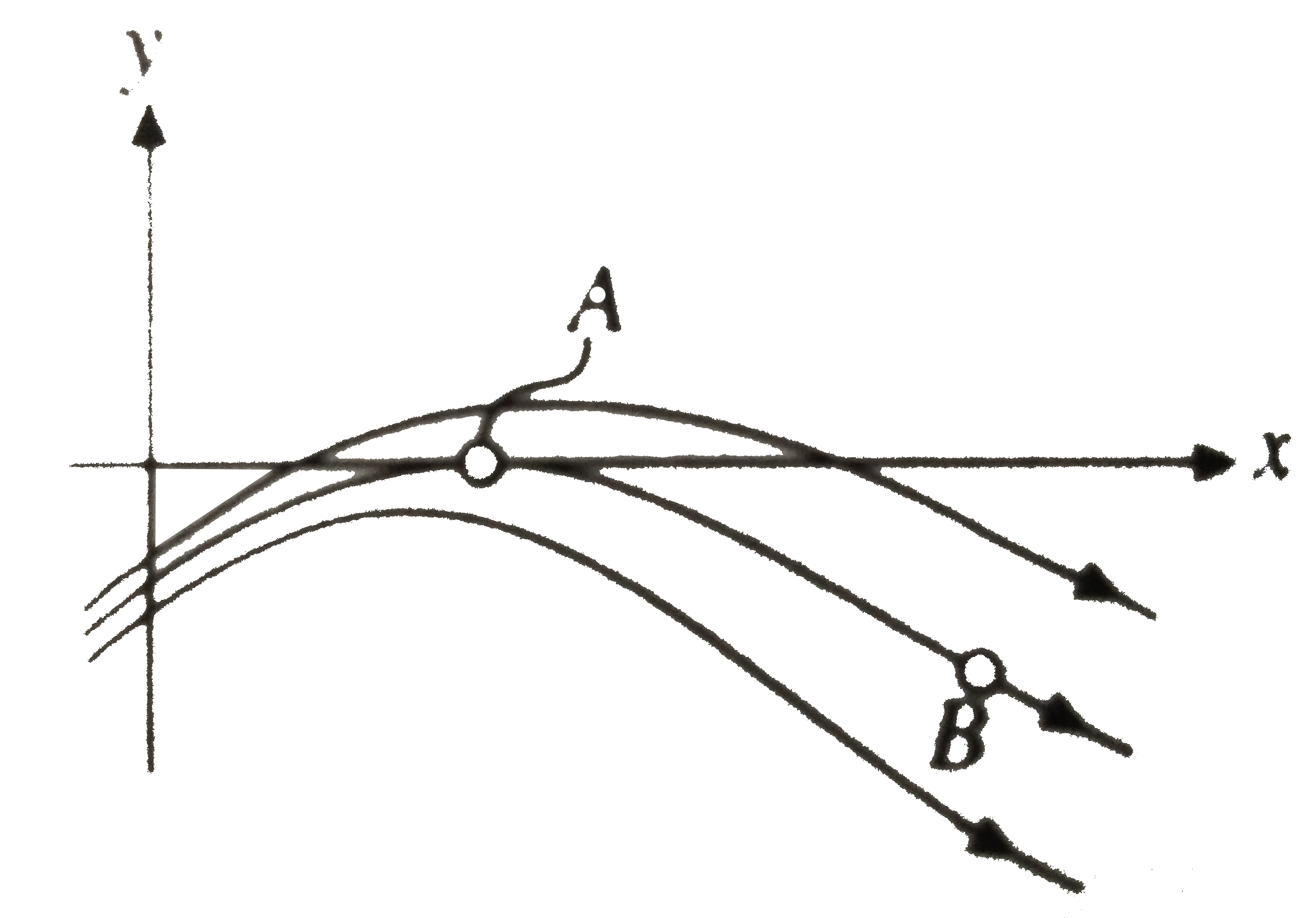 .
.